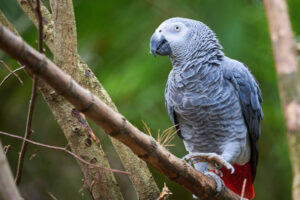Everybody has heard of childproofing, but what about petproofing? If you are a pet owner, you should know that there are many edible and non-edible items around your home that can be dangerous for your buddy.
For example, a lot of food items that you might consider perfect treats can be lethal for your dog or cat. Also, there are some plants that are very common in our homes but are dangerous and can cause a lot of problems for pets.
Taking care of a pet is a great responsibility, and if you want to do a good job, you need to know everything about any potential danger. Read on to learn all about popular household items that are toxic to your pet. It’s better to be safe than sorry!
1. Avocado
Recently, avocados have become increasingly popular because they are the only fruit that contains healthy unsaturated fats. They are great if you want to add some fat to your diet, and that’s why so many people are buying them.
Now, if you own a pet, you should know that even if avocados are delicious and good for your health, that is not the same for your pet. The dangers of avocado can vary widely from species to species, and because of that, it is somehow hard to tell what effects it has if ingested by your buddy.
It is known that the seeds, leaves, fruit, and bark of the avocado contain a compound called persin. This substance is toxic for animals, and it can cause diarrhea and vomiting in dogs and cats.
Unfortunately, birds, rodents, goats, and sheep are more sensitive and can suffer severe effects such as depression, weakness, and, if ingested in larger quantities, edema or respiratory distress.

2. Onions and garlic
Onions, garlic, leeks, and chives are all delicious and a staple in many culinary traditions, but did you know that they are extremely toxic to cats and dogs? All of these plants are a part of the Allium family, and you should never feed them to your pet.
Garlic is known to be more toxic than onions, causing problems for both dogs and cats. Also, the level of sensibility can vary. For example, breeds of Japanese descent like the Shiba Inu or Akita Inu are more sensitive and can suffer more severe adverse effects if they ingest plants from the Allium family.
The first effects that you may observe are abdominal pain, drooling, vomiting, and diarrhea. If the intoxication is more severe, red blood cells might suffer oxidative damage. This leads to anemia and respiratory problems.
3. Hyacinth
This beautiful and fragrant spring flower is unfortunately very toxic to pets, especially cats. The main culprit is its bulb, which has a highly dangerous compound called allantoin.
But since the bulb is not so easy to access for your cat, the leaves and flowers are the ones that will most probably cause the intoxication. If you notice your pet has eaten even a small amount of hyacinth, call your vet immediately, even if the symptoms have not shown up yet.
If you have cats, it is better not to keep any hyacinth inside your home or where your pets are usually spending their time. Some cats are extremely curious and will not hesitate to nibble on these plants. We know that these flowers are beautiful and smell amazing, but this is for the health of your feline.
The symptoms of hyacinth poisoning are vomiting, increased heart rate, diarrhea, oral irritation, drooling, and rapid breathing.
4. Lawn fertilizer
We are sure that you wish to have a perfect lawn with green, soft grass. You want all of your friends and neighbors to envy you. But there is one little detail that might stop you if you have a pet: the fertilizer. Did you know that most lawn fertilizers are toxic for pets?
Most commercial fertilizers have chemicals that are harmful to your cat or dog, especially if ingested. They can cause serious effects like vomiting, bowel obstruction, cardiac arrest, and, in some instances, liver and pancreatic inflammation.
If you are looking for an alternative to commercial fertilizers, you might think that organic ones might be suitable and won’t do any harm to your pet. Unfortunately, even if they are organic fertilizers, they are not safe for your pet. More than that, the ingredients used in these types of fertilizers (bone meal) can even entice your pet to eat them.
In the case of ingestion, organic fertilizers produce the same effects as commercial lawn fertilizers.
5. Grapes and raisins
If you are a pet owner, you might not be aware that grapes and raisins are highly toxic for cats and dogs. They are even more toxic than chocolate! Raisins and grapes, if consumed by your pet, can lead to kidney damage and, in some cases, kidney failure.
Now, there is no known exact reason why grapes are toxic to pets. Some scientists speculate that mycotoxin, which is produced by mold and fungus, or salicylate, which is related to aspirin, are responsible for this effect. These compounds are naturally found in grapes and raisins.
The main sign of grape poisoning in dogs is vomiting. This occurs within 24 hours after ingestion. Following this, your dog can suffer from diarrhea, a lack of appetite, and lethargy. If you suspect your dog has eaten grapes or raisins, call your ver immediately.

6. Chocolate
If you have a puppy, you probably already know that chocolate is dangerous for dogs. As in the case of caffeine, chocolate contains a compound called theobromine. Medicinally, this chemical is used as a diuretic, smooth muscle relaxant, or heart stimulant. But dogs, unlike humans, can’t process theobromine in the same way humans do, and that’s why it’s so dangerous to them.
The concentration of theobromine depends on the type of chocolate. The darker the chocolate, the more theobromine it contains. So, do your best to keep the chocolate somewhere where your dog can’t reach it.
The symptoms of theobromine intoxication depend on the amount of chocolate that was ingested. The first signs are diarrhea, vomiting, extreme thirst, and restlessness. In more severe cases, heart failure and seizures can occur.
7. Xylitol
As a dog owner, you know that chocolate is not good for dogs, and that’s why you always take care to never let your pooch eat anything that contains it. But did you know that if your pup manages to eat some sugar-free chewing gum, the consequences could be lethal?
Sugar-free products contain artificial sweeteners, and one very common class of sweeteners is sugar alcohol. Xylitol is part of this class and is extremely dangerous for your pet.
In both pets and humans, the levels of sugar in our bloodstream are regulated by insulin. This is a hormone that is produced by the pancreas. When humans eat xylitol, no insulin is released. But when a dog eats xylitol, things get dramatic really fast. This chemical gets absorbed into their bloodstream incredibly fast, and then their pancreas releases too much insulin. Because too much insulin is released in such a short time, hypoglycemia occurs, which can be life-threatening.
The symptoms of xylitol poisoning in dogs are vomiting, weakness, stiffness, and, if not treated fast enough, seizures. So, never let your dog consume products that have xylitol. Always use toothpaste that is designed for dogs.
If you want to read more about foods that are dangerous for dogs, this book might be a good start.
You should also read: Which 8 Dog Breeds Are Most Likely to Bite Their Owners?












